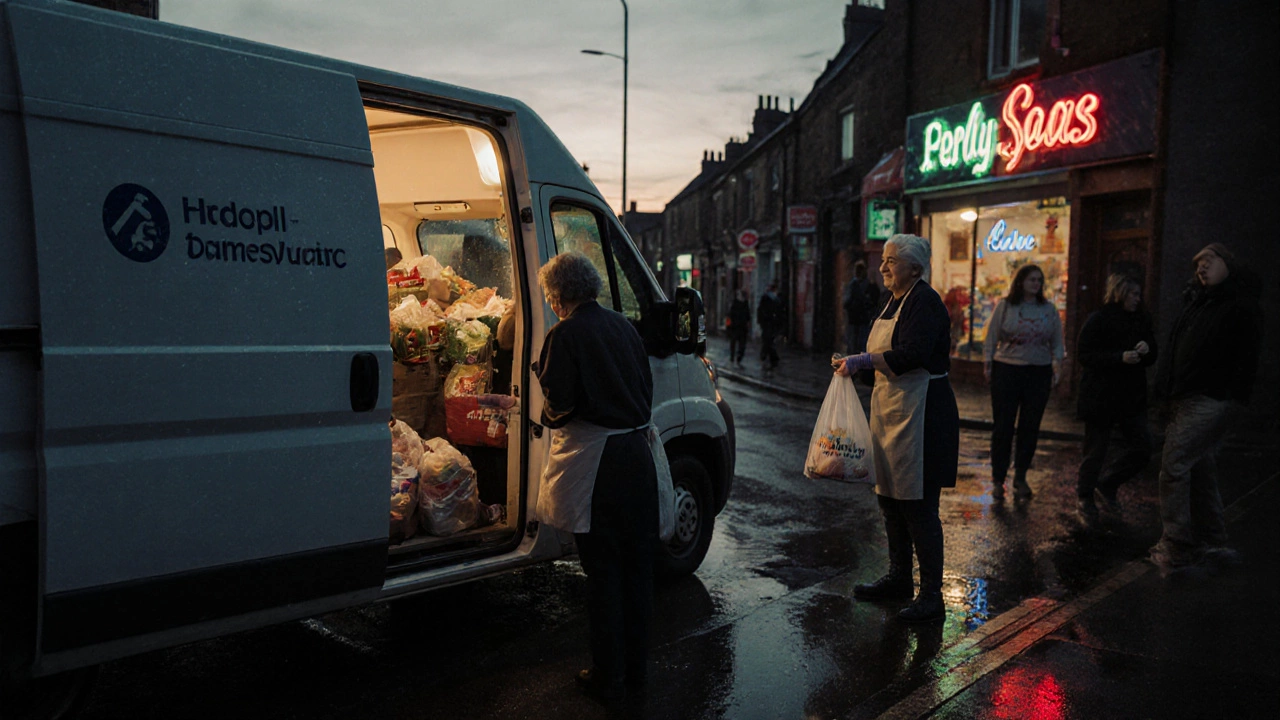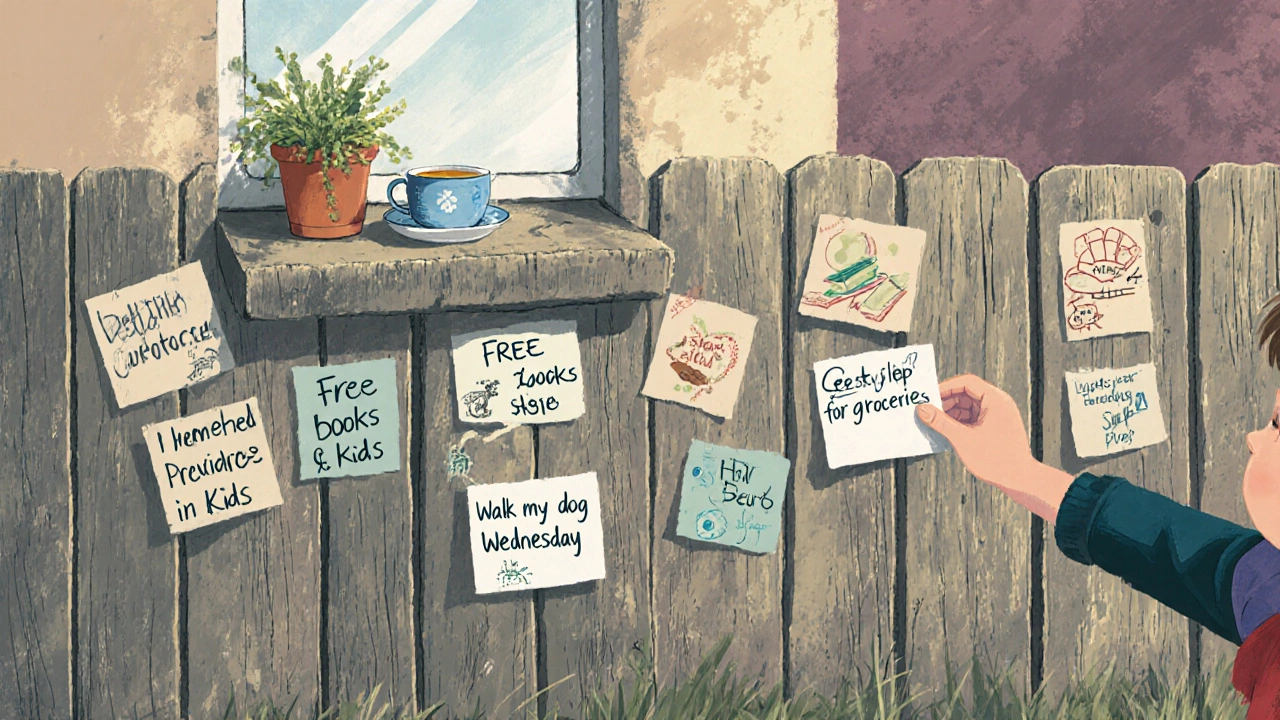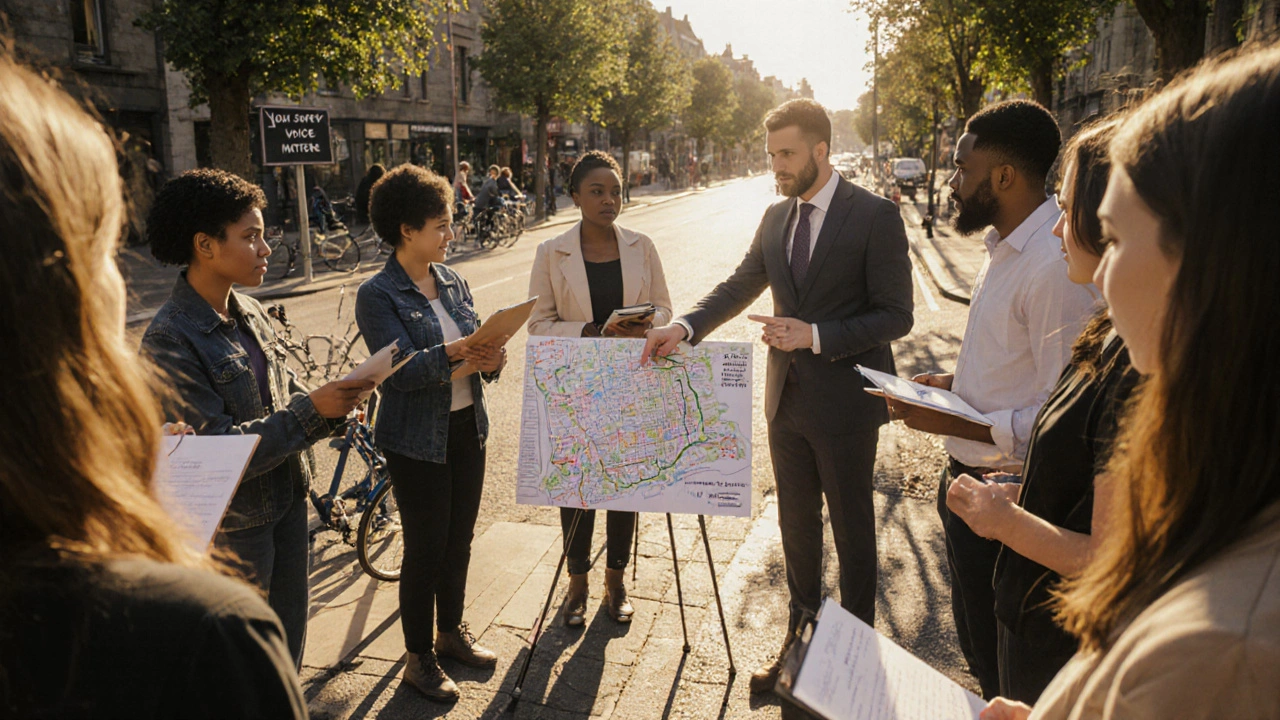Community engagement and outreach aren’t just buzzwords. They’re the real work of bringing people together to solve problems, share resources, and make neighborhoods stronger. If you’ve ever seen neighbors organizing a clean-up day, a local food bank setting up weekend distributions, or a youth group hosting a free tutoring session, you’ve seen community engagement in action. Outreach is how you get those people to show up in the first place.
What Exactly Is Community Engagement?
Community engagement is when people in a neighborhood or group actively take part in decisions that affect their lives. It’s not about handing out flyers or running a one-time event. It’s about listening, collaborating, and creating shared ownership. Think of it like planting a garden-you don’t just throw seeds in the ground and walk away. You water them, pull weeds, and check in regularly. Community engagement works the same way.
It includes things like attending town hall meetings, joining a neighborhood association, helping design a new park, or giving feedback on a local school policy. The key is that people aren’t just recipients of services-they’re part of the solution. In Edinburgh, for example, residents helped redesign a busy intersection near Leith Walk after sharing their safety concerns with the city council. That’s engagement.
What Is Outreach, Really?
Outreach is the bridge between organizations and the people who need their help. It’s how you find folks who might not walk through your door. Maybe they don’t have internet access. Maybe they’re too busy working two jobs. Maybe they’ve had bad experiences with institutions in the past. Outreach meets them where they are.
That could mean setting up a table at a bus stop to sign people up for free meals. It could be sending workers door-to-door in housing estates to explain how to apply for energy support. It could be partnering with local mosques, churches, or cultural centers to share information in languages people actually speak. Outreach isn’t about broadcasting-it’s about connecting.
One food bank in Glasgow started sending out mobile vans to areas with high food insecurity. They didn’t wait for people to come to them. They brought food, hygiene kits, and sign-up forms right to the streets. Within six months, their reach increased by 65%. That’s outreach working.
Why Do They Matter Together?
Engagement without outreach leaves people behind. Outreach without engagement feels empty. You can hand out meals every week, but if you never ask residents what else they need, you’re just treating symptoms-not fixing the cause.
Take mental health services in rural Scotland. Many people won’t walk into a clinic because of stigma or lack of transport. Outreach workers started holding coffee mornings in village halls, chatting with people while serving tea. Those casual talks led to some opening up about anxiety or depression. From there, they were connected to counseling services-because trust was already built.
That’s the magic: outreach builds trust. Engagement turns that trust into action. Together, they create lasting change.

What Does Good Community Engagement Look Like?
It’s not about big events or fancy logos. It’s about consistency, honesty, and respect. Here’s what works:
- Listening more than talking. Hold open forums where people speak first, and leaders listen without interrupting.
- Meeting people where they are. Not just physically-also culturally and linguistically. Translate materials. Use local dialects. Respect traditions.
- Following through. If you say you’ll report back on feedback, do it. People notice when promises are broken.
- Including everyone. Make space for disabled people, non-native speakers, young people, and older adults. Don’t assume one group speaks for all.
- Sharing power. Let community members help design programs, pick priorities, and even manage budgets.
In Fife, a housing association let tenants vote on how to spend £50,000 in community funds. One group chose to fix broken playground equipment. Another wanted a community garden. Both got funded. The result? Fewer complaints, more pride, and real ownership.
Common Outreach Mistakes (And How to Avoid Them)
Even well-meaning groups mess this up. Here are the most common errors:
- Assuming everyone knows what you do. Just because you’ve posted on Facebook doesn’t mean the single mom working nights saw it. Use flyers, radio ads, word of mouth.
- Using jargon. “Stakeholder engagement,” “intervention strategy,” “resource allocation”-these terms shut people out. Say “we want to hear your ideas” instead.
- Only showing up when you need help. If you only appear during fundraising drives or census counts, people will think you only care about your goals-not theirs.
- Not measuring what matters. Don’t just count how many people showed up. Ask: Did they feel heard? Did they take action afterward? Did trust grow?
A charity in Dundee stopped counting how many people attended their workshops. Instead, they asked: “Would you recommend this to a friend?” and “Did you feel respected here?” The answers changed how they ran everything.

How to Start Your Own Outreach Effort
You don’t need a big budget or staff. Start small:
- Identify one real need. Is it loneliness among seniors? Lack of after-school activities? Poor recycling rates? Pick one thing people talk about.
- Find the people already doing something. Talk to local shops, faith groups, schools, or even barbershops. They know who’s struggling.
- Ask, don’t assume. Go door-to-door or sit at the bus stop. Ask: “What’s one thing that would make your life easier?” Write down the answers.
- Start with a simple action. Host a weekly coffee hour. Organize a park clean-up. Run a free phone clinic to help people fill out forms.
- Share the results. Post photos, thank people by name, and say what changed because of them.
In a housing complex in West Lothian, one resident started a “Neighbors’ Noticeboard” on a fence. People posted requests: “Need help carrying groceries,” “Looking for someone to walk my dog,” “Free books for kids.” Within three months, the whole block was helping each other. No funding. Just connection.
What Happens When It Works?
When community engagement and outreach are done right, you see real shifts:
- Crime drops because people know each other and look out for one another.
- Local services improve because they’re shaped by real feedback.
- People feel less alone. They know they belong.
- Volunteer rates go up-not because they’re asked, but because they want to.
- Leaders earn trust, not just compliance.
It’s not magic. It’s human. When you treat people as partners-not problems-you build something that lasts longer than any grant or campaign.
Final Thought: It’s Not About You
Too many outreach efforts are designed to make the organization look good. The real goal? To make the community stronger. That means stepping back. Letting others lead. Celebrating their wins-not yours.
Community engagement isn’t a project. It’s a practice. And like any practice, it gets better with time, patience, and heart.
What’s the difference between community engagement and community outreach?
Outreach is how you connect with people-getting your message out, meeting them where they are, building trust. Engagement is what happens after: people actively participate, share ideas, and help shape decisions. Outreach opens the door. Engagement keeps people inside and involved.
Do I need money to start community engagement?
No. Many of the most powerful efforts cost little or nothing. A simple conversation, a shared meal, a noticeboard, or a weekly walk around the neighborhood can spark real change. Money helps scale things, but trust and connection are free-and they’re what really matter.
How do I know if my outreach is working?
Look for signs of trust and participation. Are people showing up without being asked? Are they bringing friends? Do they give honest feedback-even if it’s critical? Are they starting their own initiatives? If yes, you’re building something real. Numbers like attendance or donations matter less than relationships.
What if people don’t show up to events?
Don’t assume they’re not interested. Maybe the time doesn’t work. Maybe the location is hard to reach. Maybe they don’t feel safe or welcome. Go talk to them. Ask why. Change your approach. Outreach isn’t about getting people to come to you-it’s about going to them.
Can small towns benefit from community engagement too?
Absolutely. In fact, small communities often have stronger natural ties. The challenge isn’t lack of connection-it’s knowing how to channel it. A single village meeting can lead to a new walking path, a shared tool library, or a senior support network. Size doesn’t matter. Commitment does.
